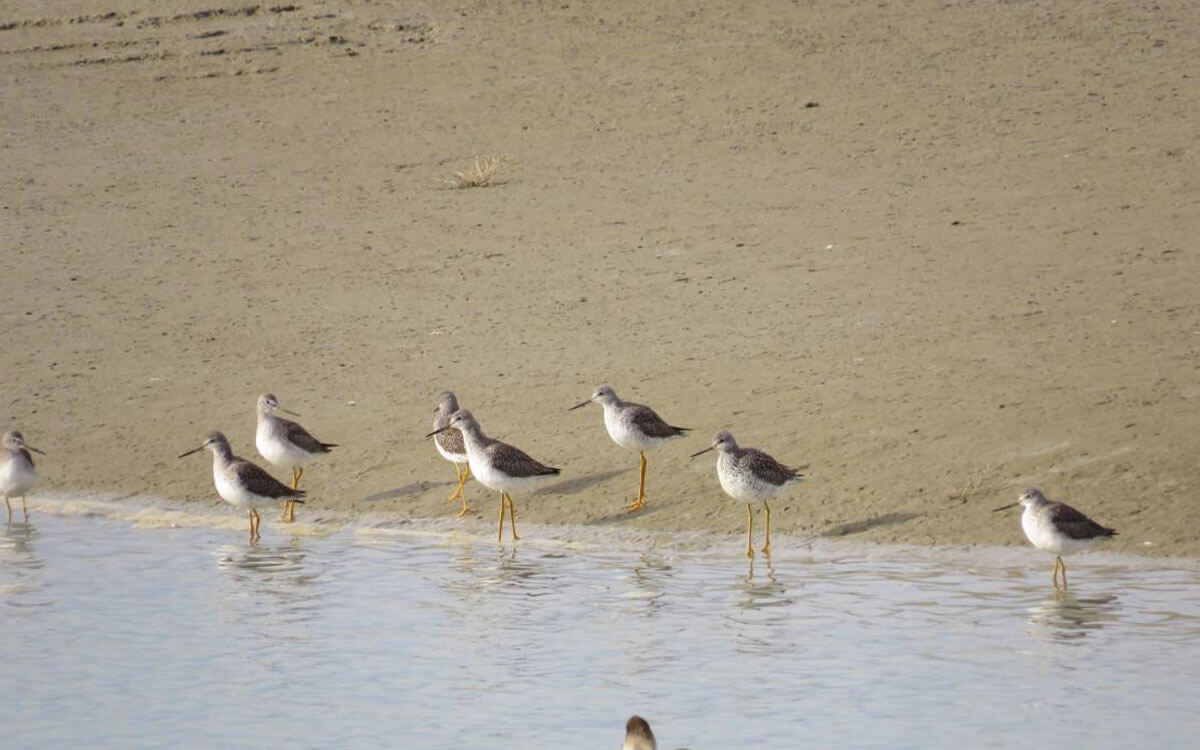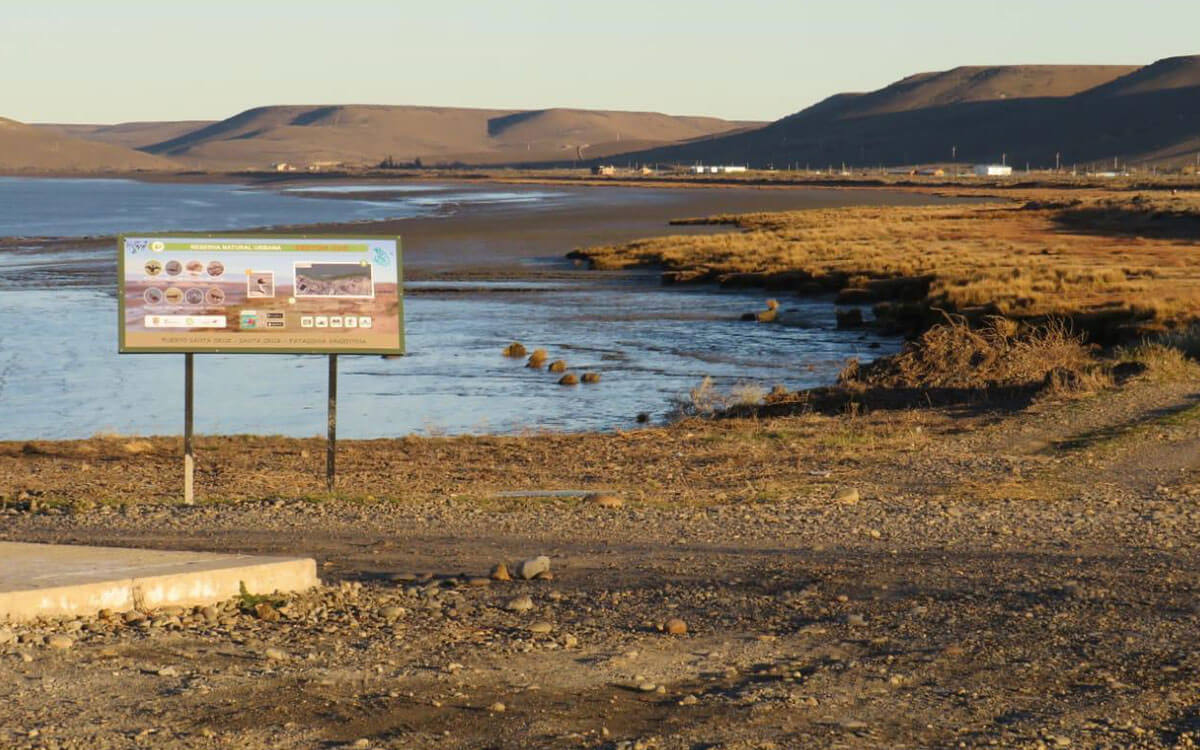Translated from Spanish by WHSRN Executive Office
The WHSRN Executive Office is pleased to announce that the Santa Cruz River Estuary is a new WHSRN Site of Regional Importance. The site covers 30,000 hectares and is located in the province of Santa Cruz along the Atlantic coast of Patagonia. The new WHSRN site was nominated by the Asociación Ambiente Sur with the support of the Municipality of Puerto Santa Cruz.
The site was designated a Site of Regional Importance for the presence of more than 1% of the biogeographic population of the Magellanic Oystercatcher (Haematopus leucopodus). This species uses the area throughout the year, but numbers increase in austral winter when it concentrates at the site during the non-breeding season. The highest recent count was a flock of 929 individuals in April 2021, representing 1,47% of the total population. These high numbers are not unusual for the site, as historical data during surveys in 1999-2000 estimated between 700 and 1,200 individuals.


Left: Greater Yellowlegs at the new WHSRN site Santa Cruz River Estuary. Right: View of one of the sectors of the new WHSRN Site. Photos courtesy of Ambiente Sur.
In addition to the Magellanic Oystercatcher, surveys conducted by Ambiente Sur since 2016 have shown that several other species frequently visit the estuary to rest and feed, including the Two-banded Plover (Charadrius falklandicus), Rufous-chested Dotterel (Ch. modestus), Sanderling (Calidris alba), White-rumped Sandpiper (C. fuscicollis), Baird’s Sandpiper (C. bairdii), Red Knot (C. canutus), and Hudsonian’s Godwit (Limosa haemastica). A flock of 400 individual Red Knots was observed by Santiago Imberti in May 2005, representing 3% of the wintering population in Tierra del Fuego. However, in recent years the maximum number has not exceeded 100 individuals, probably as a result of the significant population decline of the species in recent decades.
The designated area includes lands under municipal, provincial and private jurisdiction, but the ultimate authority over the entire area is the Provincial Secretary of the Environment (SEA) and the authority that has submitted the letter of commitment to protect the area for shorebirds. Part of the southern edge of the estuary is within the city limits, including the North and South Urban Nature Reserves (UNR). In addition, the estuary has sectors that have been declared Natural Heritage Areas, including the waterfront from the confluence of the Chico and Santa Cruz rivers to its mouth, the Punta Entrada penguin colony, and Leones Island. This island is an area in the middle of the estuary and of scientific use under special protection of the Dirección de Áreas Protegidas del Consejo Agrario Provincial (Protected Areas Directorate of the Provincial Agricultural Council).

Awareness-raising activities with local schools. Photo courtesy of Ambiente Sur
The management of the urban nature reserves within the WHSRN site is the responsibility of the Environmental Department of the City of Puerto Santa Cruz. Recent actions include the installation of a perimeter fence in the northern sector of the UNR, the design of interpretive and informative signage, and monitoring to inventory bird species and the main threats at the site. These threats include domestic waste, domestic animals, military activities, aggregate mining, and artisanal and commercial fishing.
The local partner, Ambiente Sur, is working with local authorities to address these threats and find solutions to protect the shorebird habitat. From 2018 to date, Asociación Ambiente Sur has worked with the municipality of Puerto Santa Cruz to develop activities that have included four Hooded Grebe festivals and two shorebird festivals, events that have helped raise local awareness.
With the addition of the Santa Cruz estuary, WHSRN now has 118 sites in 19 countries, with 11 in Argentina.
Cover Photo: Magellanic Ostercatchers at the Santa Cruz river estuary WHSRN site. Photo courtesy of Ambiente Sur.






